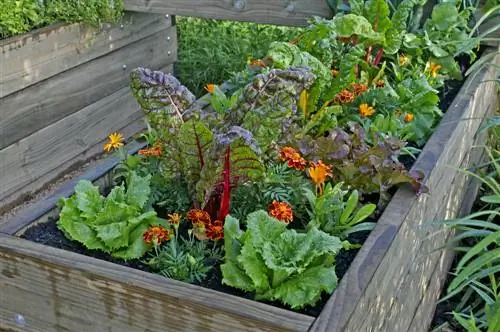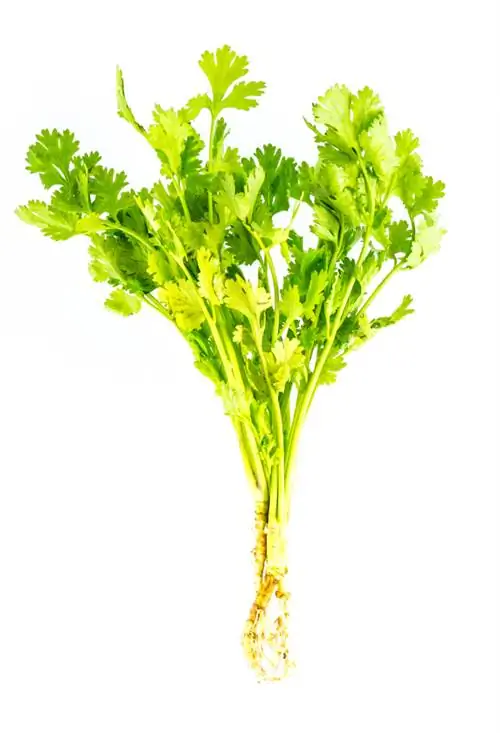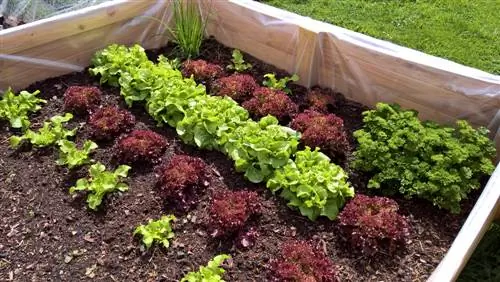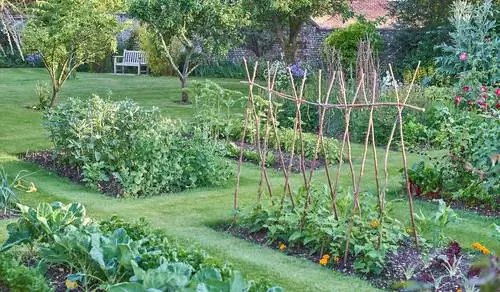- Author admin [email protected].
- Public 2023-12-25 17:45.
- Last modified 2025-01-23 11:21.
Since the space in the raised bed is limited, the question arises every year: Which plants should I put in the bed and how do I best use the available space? You can use the following criteria to decide when to plant what.
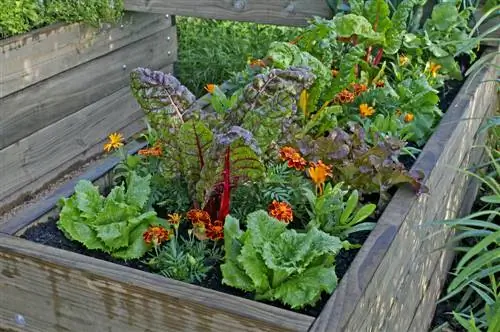
How do I design a raised bed planting plan?
A good planting plan for your raised bed takes into account crop rotation and mixed culture. In the 1st year you plant heavy feeders such as zucchini and tomatoes, in the 2nd year medium feeders such as kohlrabi and lettuce, and in the 3rd year low feeders such as bush beans and herbs.
Crop rotation
The gardener understands two things by the term “crop rotation”: On the one hand, no plants from the same crop group (e.g. root vegetables, cucurbits, nightshades, legumes) and from the same plant family are grown every three to four years. Since they are often plagued by the same pests, the resourceful gardener tricks the animals with a crop rotation: They then have no chance of multiplying further the next year and attacking the plants in even larger numbers. Secondly, “crop rotation” also means that the plants, divided according to their nutrient requirements into heavy, medium and weak feeders, are grown one after the other on a bed every three to four years.
Example of crop rotation in raised beds
An example of good crop rotation on a compost raised bed:
1. Year (heavy eater): zucchini, tomatoes, endives
2. Year (middle eater): Kohlrabi (middle), surrounded by lettuces and lamb's lettuce, as well as carrots, onions, parsnips and strawberries3. Year (weak eater): French beans (middle), summer purslane, lamb's lettuce, carrots, radishes, culinary herbs (parsley, chives)
Mixed Culture
With a mixed culture, you mix plants from different plant families together in such a way that the space in the raised bed is used optimally. The optimal use is, firstly, a time-based approach by starting sowing or planting early and immediately re-sowing or re-planting harvested areas. Secondly, it is a spatial one if you combine the plants so that you can plant them as densely as possible. The plants above and below ground should complement each other well: bush beans, for example, go well next to narrow, deep-rooted plants such as carrots. And thirdly, good mixed culture helps to keep the plants he althy as they drive away pests from each other.
Tip
In principle, any useful plant can grow in a raised bed, but if you want to make the most of the space and the season, less voluminous and fast-growing plants make more sense than those that take up a lot of space or have a long germination period.

